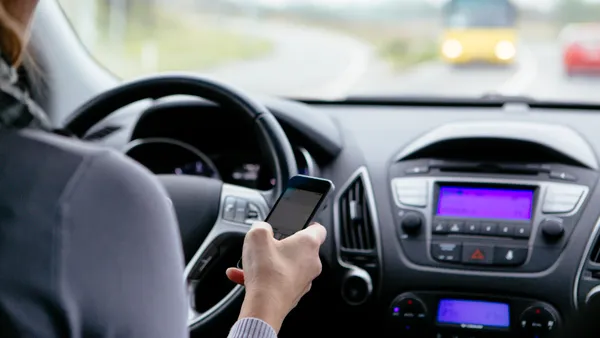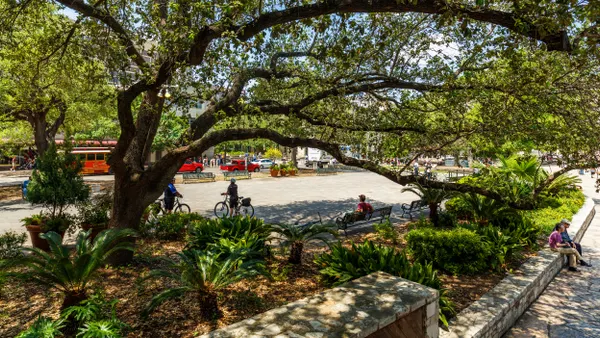Dive Brief:
- In the early months of the COVID-19 pandemic, vehicle miles traveled (VMT) dropped significantly but those vehicles still on the streets were driving faster, according to a study by transportation analytics company INRIX. The company also found traffic collisions went down across all major metropolitan areas, although since August they have started to track closer to last year's levels.
- By early April, VMT dropped 46% nationwide and took 11 weeks to rebound, although many major metropolitan areas have still not returned to pre-pandemic levels. Of the top 100 metropolitan areas, INRIX found that just 45 have restored to pre-pandemic VMT levels.
- Of the U.S.' top 25 metro-area roadways studied, INRIX found a dramatic increase in average speed from April to July, with Philadelphia seeing the biggest jump at 64%. San Francisco was not far behind at a 63% increase, followed by Boston at 56%. Collisions, however, decreased as VMT reached its lowest point, albeit with variation across cities. In seven metro areas, collisions fell by more than 50% and 21 of the 25 areas studied saw collisions fall by over 25%.
Dive Insight:
There has been some evidence of vehicle speeds increasing dramatically during the early months of COVID-19 while VMTs dropped. In late March, INRIX said congestion may "cease to exist" in the United States' most congested cities due to stay-at-home orders.
But the report's author Bob Pishue noted there are still limits to what can be determined, including whether speed was a factor in the fatal crashes that have occurred this year on city streets, or whether there were other factors at play like distracted or impaired driving. The initial months of the pandemic also saw an increase in fatality rates. The National Safety Council said the United States saw a 20% jump in motor vehicle death rates in the first six months of the year. Pishue said that trend is "pretty concerning." And while crashes may be down, he said their severity may have increased.
Even as travel speeds increased, INRIX said there might be some limited room for optimism. The company’s study found that 14 out of the 25 metropolitan areas studied had a larger percentage decrease of collisions on major arterial roads compared to interstates, which is notable as arterials are favored by bicyclists, pedestrians and other transportation modes, and their safety is heavily affected by increased travel speeds.
However, pedestrian and bicyclist safety remains a major issue in cities across the United States. Data about the effect of high-speeds on arterial crashes and whether those crashes were fatal is still not available, so it is difficult to truly assess the impact on city streets, according to Pishue.
City leaders are concerned that as urban areas try to recover from the pandemic, there will be a spike in car ownership. That trend was seen in China earlier this year, while New York has also seen a similar shift.
But there has also been a surge in cycling as people seek alternative ways to get around. Cities have even closed some streets to cars to accommodate that trend. It will be imperative for cities to find a balance between all these competing transportation modes and understand just how big any mode-shifting is for their residents, Pishue said.
Although supporting those new modes may be further complicated as budgets for any improvements are under threat as cities face significant fiscal headwinds.
"Public officials and communities all need to get together to discuss what they can do on these roads to just accommodate everybody, as they shift," Pishue said. "Maybe they don't drive, maybe they don't take transit and they start walking or biking. And so there just might be a new dynamic… Once all of this shakes out, how can we better utilize our streets to accommodate the newest trends?"












